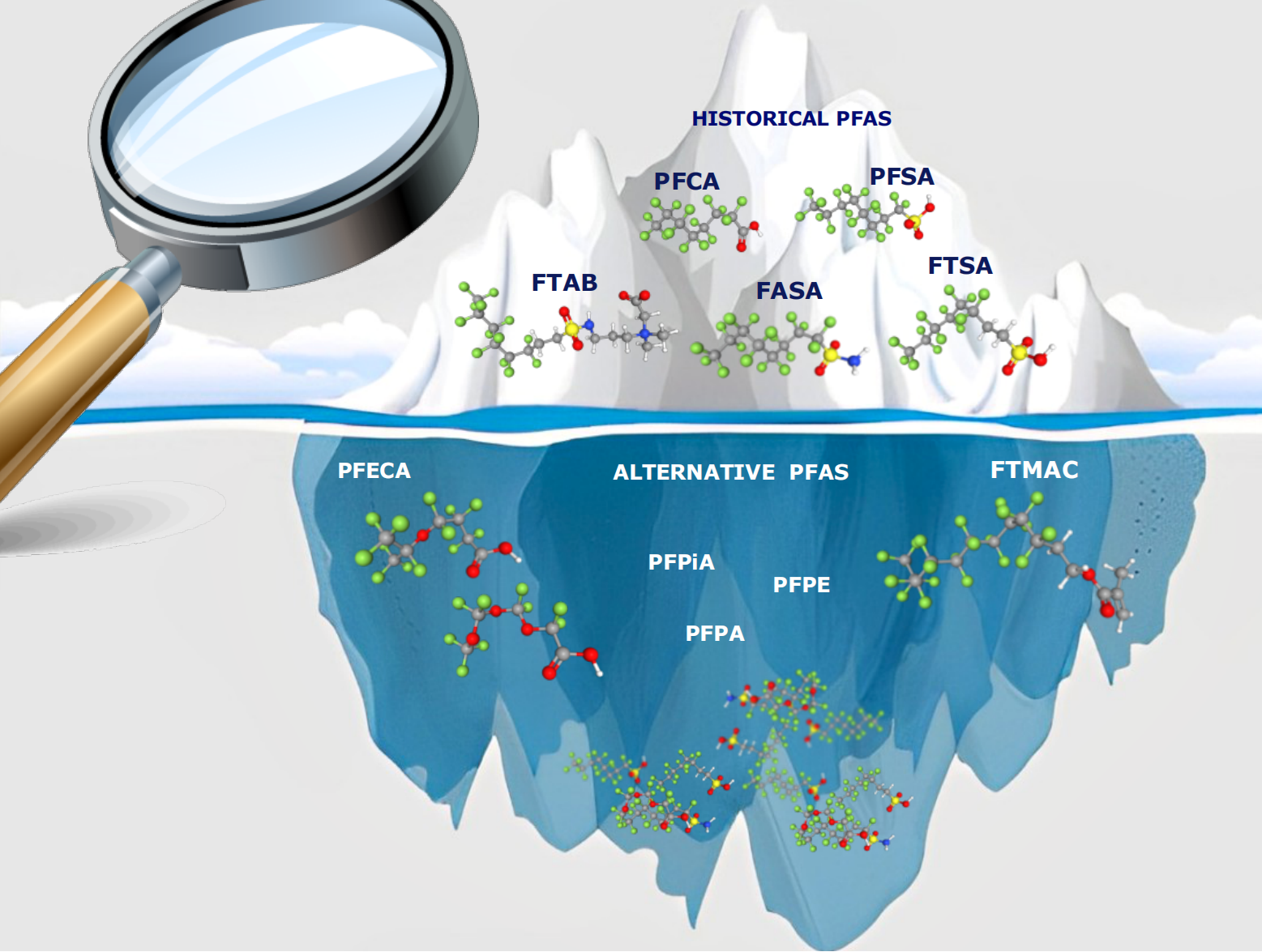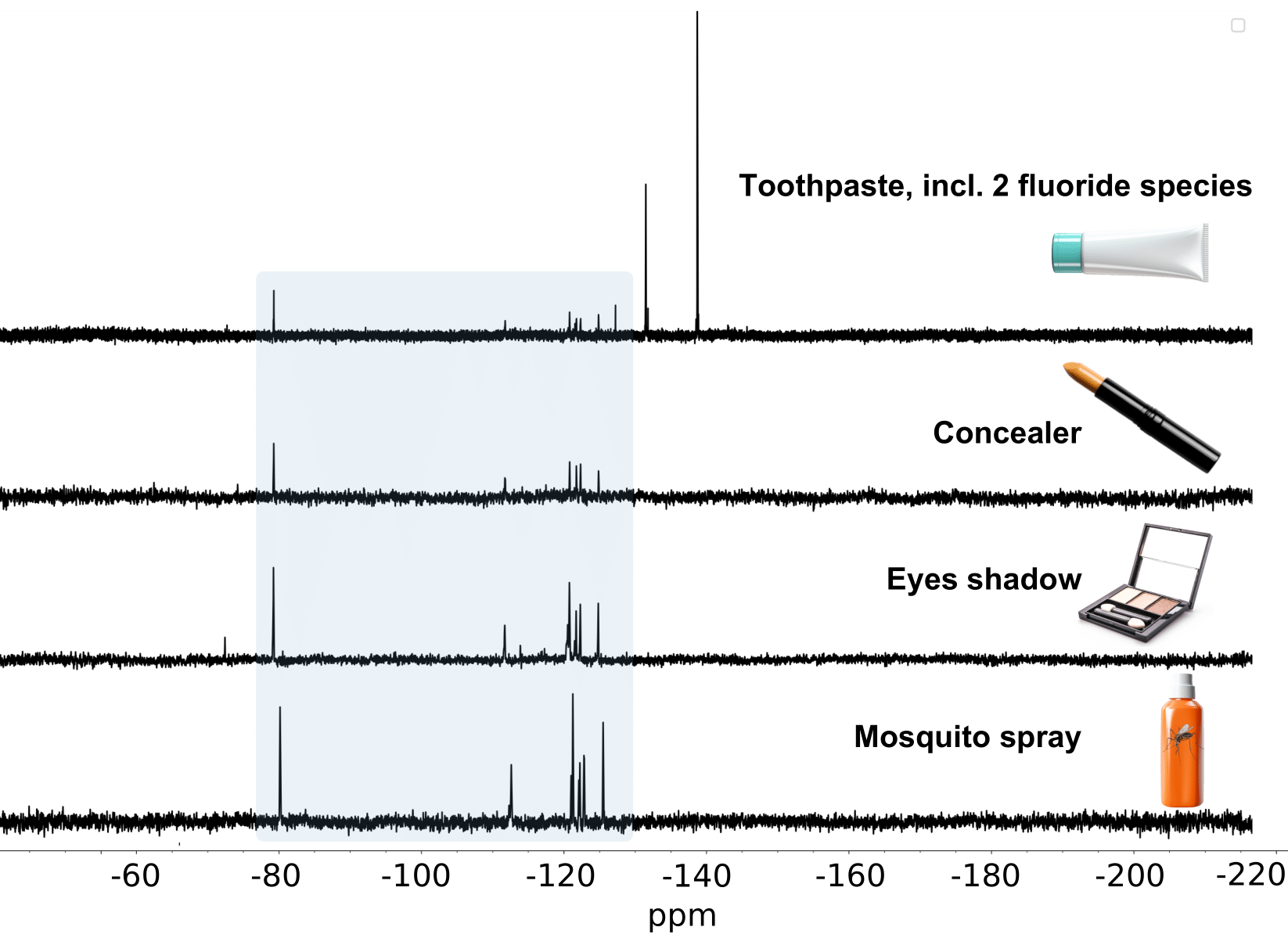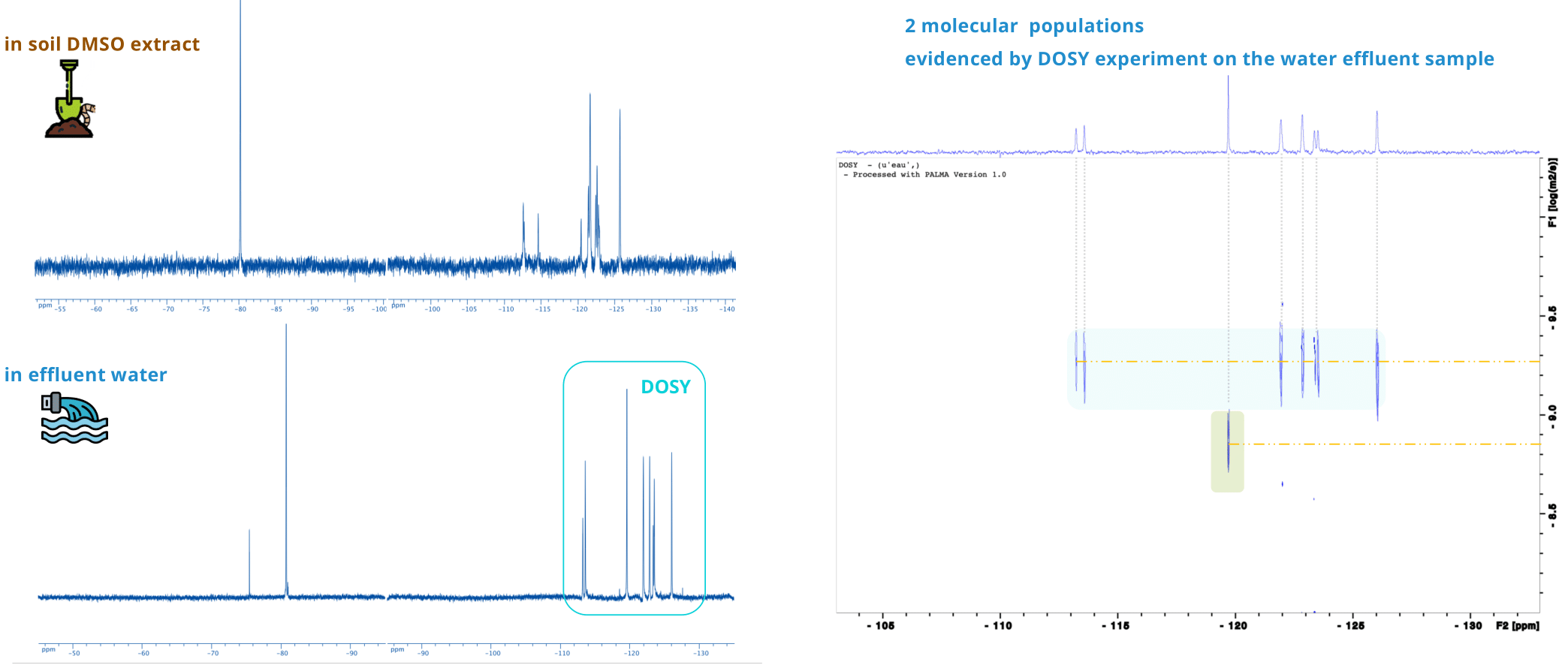FLUOVI4L 19F NMR for fluorinated contaminants diagnosis
FLUOVI4L is an advanced 19F NMR platform designed for the analysis of fluorinated substances, enabling detection and quantification directly from NMR spectra. The platform covers a wide range of fluorinated compounds, including PFAS, pharmaceuticals, pesticides, veterinary drugs, and more, providing fast, non-destructive insights without the need for prior separation or purification. This platform is particularly suited for PFAS pollutants (Per- and PolyFluoroAlkyl Substances), classified as “emerging contaminants”.

 19F NMR spectra of ingredients from two cosmetic products, and of contaminated samples from commercial daily life products exhibiting the characteristic PFAS fingerprint.
19F NMR spectra of ingredients from two cosmetic products, and of contaminated samples from commercial daily life products exhibiting the characteristic PFAS fingerprint.
FLUOVI4L Platform Overview
Although the detection limit is modest and does not allow trace-level analysis, non-targeted analysis of fluorinated pollutants is today a crucial approach for environmental and product monitoring — a need reinforced by the French Academy of Sciences (2025), advocating for such analytical approaches.
The FLUOVI4L platform relies on two main components:
- An automated data preprocessing pipeline, enabling quantification of samples to provide total PFAS and total soluble organic fluorine concentration.
- A fluorine NMR spectral database, containing spectra from various individuals from known fluorinated families.
Fluorinated NMR datasets are preprocessed using an automatic pipeline based on Plasmodesma.
Typically, 19F NMR allows to distinguish:
- aromatic Φ-F,
- -CF3, -O-CF3
- aliphatic -CF2-, -CHF-…
For PFAS compounds, additional insights can be obtained through specific NMR experiments, including:
- estimation of average chain length,
- detection of possible branched per- and polyfluoroalkyl chains
The platform has been applied to various environmental, cosmetic, and food matrices, including milk, concealer, soil, and wastewater, revealing the presence of organic fluorine and notably PFAS.
CASC4DE has implemented several key developments: 1D and 2D NMR sequences enabling a wide spectral range compatible with quantification. This is crucial to address new fluorinated products introduced by industry, often designed to circumvent regulations and evade conventional analyses. Such developments highlight the importance of a non-targeted technique capable of tracking and characterizing these constantly evolving compounds.
Interestingly, DOSY (Diffusion-Ordered Spectroscopy) experiments allow the separation of molecules in a mixture based on their diffusion coefficients, provided the samples are sufficiently concentrated. This enables the identification and distinction of multiple molecular populations, even when they overlap in conventional NMR spectra.

Note: The FLUOVI4L platform also incorporates Machine Learning software for automated 19F NMR spectra analysis, enabling fast, reproducible data processing and supporting the identification of isolated fluorinated molecules. Work is ongoing to extend these capabilities to mixtures of individual compounds.
2022–2025: The ADEME GESIPOL IPANEMA Project
CASC4DE is taking on a new challenge: analyzing polluted soils and directly comparing the performance of 19F NMR and LC-MS/MS in this strategic field. Our role is to develop and evaluate a non-targeted fluorine NMR quantification technique, which can be used alongside mass spectrometry (MS) to characterize PFAS mixtures in environmental matrices.

The studies confirm the relevance of 19F NMR, capable of measuring all fluorinated compounds — PFAS or not — while LC-MS detects only individual target substances one by one. In a case study on a firefighter training site, the LC-MS/MS reference method could recover only about 30% of the total PFAS quantified by NMR. Similar results are reported in the few available publications from four North American academic laboratories.
Together, these approaches are complementary in analytical chemistry, each serving distinct purposes in the identification and quantification of compounds.
Targeted approach is more of an a priori knowledge method since it involves measuring a predetermined set of previously characterized analytes.
Untargeted approach is a global and comprehensive measurement of both known and unknown compounds. It involves investigating pollution as a whole, even if this may necessitate making assumptions and raising challenging identification issues.
The results of this work were presented at GERM NMR congress (Milan, Italy, September 2022) and at the scientific meeting on endocrine disruptors organized by ANSES (Paris, France, June 2024), as well as at the ADEME GESIPOL workshops (February 2025). The work was partly supported by innovation funding programs from ANR (French National Research Agency) and Alsace Innovation Agency.




